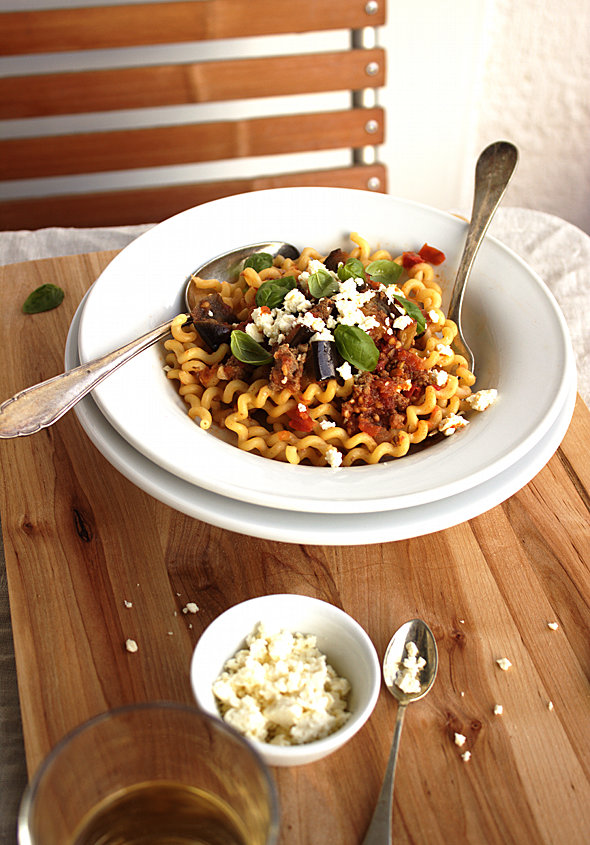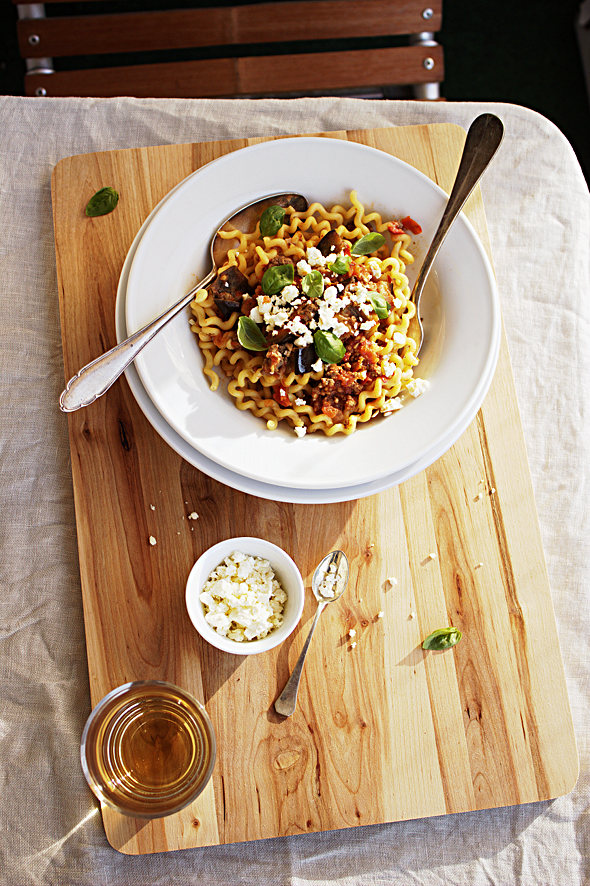Chewy Chocolate Cookies with Magic Chickpeas
October 5th, 2014


Spaghetti (alla) Bolognese is widely popular around the globe and often perceived as a typical Italian dish. Funny thing though is, that Italy of all things happen to be the only country where spaghetti is actually not served along with the ground meat based sauce (to be honest I didn’t know that until now that I’m writing about it). The reason for that is that spaghetti is lacking the substantial ‘meat sauces adhere well on it’ attribute.
Tagliatelle is usually the classic pasta in Italy that gets the privilege to be dressed with Bolognese ragu. I for one know, that my next pasta Bolognese will be made with tagliatelle. Alternatively pappardelle, fettucine or short tube pasta such as rigatoni or penne are also acceptable.
The typical and not typical ingredients in classic Bolognese
For the meat usually minced beef is used. Also typical for Bolognese ragu is mirepoix which stands for the vegetable trio of chopped celery, carrots and onions. In more contemporary recipes milk is also added, as is wine (red or white). Tomatoes in any form and state of preference are actually considered an auxiliary ingredient. In contemporary recipes around the globe tomatoes however are a basic ingredient.
When it comes to non typical ingredients the second big surprise besides the preferred pasta shape that this sauce has in store is waiting. Garlic, that offers so much flavor and intensity and seems apparently very popular in Italian cuisine is actually not part of the classic version. Yes, that really is the case. The bulbous plant is actually not part of Bolognese in authentic recipes.
“Garlic can be exciting when you turn to it sporadically, on impulse, but on a regular basis, it is tiresome.”
To quote cooking authority Marcella Hazan, the late acclaimed Italian cookbook author who played an important role in making classic Italian cuisine popular in the US. Her first cookbook The classic Italian Cookbook was published in 1973 when she was already in her early fifties. Comparisons with Julia Child weren’t afar who as an American chef is considered one of the major influences to make the French cuisine popular in the US with her TV shows and cookbooks.
When looking behind the common belief that garlic is frequently used in Italy you can see that there are actually a lot of Italian dishes that don’t use garlic. Also that there are two camps regarding the bulbous herb. One, that are firm believers in garlic and the other one, that truly despise it for its pungent flavor and bad breath it can cause as an unwelcome side effect. Silvio Berlusconi, former prime minister of Italy, is notoriously known (among other things apart from his impressive accomplishments) for his aversion for garlic. Well, actually there are three camps with the third one being in between “following” Hazan’s guide.

About this Mediterranean fusion recipe
One of my inspirations for a Greek influenced Bolognese came from one of my brothers. He once cooked for our family Spaghetti Bolognese in dedication of his latest occupied bachelor pad and to my little pleasant surprise included some feta cheese in his sauce. I always was fond of eggplant in Bolognese variations. Together with being lately intrigued in general by fusion cuisine it was just a matter of time for this Mediterranean hybrid recipe which also does include some minced garlic. The use of eggplant along with spices like cumin and cinnamon are reminiscent of the Greek Moussaka.